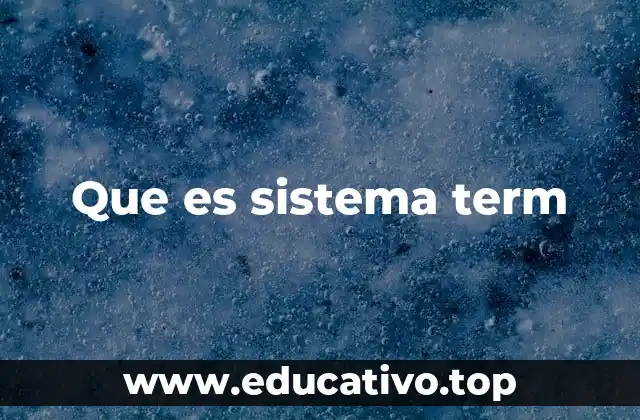Introducción a Heat en inglés
Heat, a fundamental concept in physics, is often translated to different languages, but its meaning remains the same. In English, heat is a term used to describe the transfer of energy from one body or system to another due to a difference in temperature. In this article, we will delve into the world of heat, exploring its definition, types, units, and practical applications.
Definición de Calor en Física
In physics, heat is defined as a form of energy that is transferred from one body or system to another due to a difference in temperature. This energy transfer occurs through three main methods: conduction, convection, and radiation. Heat always flows from an area of higher temperature to an area of lower temperature, until thermal equilibrium is reached.
Tipos de Calor: Sensible y Latente
There are two main types of heat: sensible heat and latent heat. Sensible heat is the energy required to change the temperature of an object or substance, while latent heat is the energy required to change the state of an object or substance (e.g., from solid to liquid or liquid to gas). Understanding these types of heat is crucial in various fields, such as engineering, chemistry, and meteorology.
Unidades de Medida para el Calor
Heat is typically measured in units of energy, such as joules (J), calories (cal), or British thermal units (BTU). The most commonly used unit is the joule, which is defined as the energy required to raise the temperature of one kilogram of water by one degree Celsius.
¿Cómo se Transfiere el Calor?
Heat transfer occurs through three main methods: conduction, convection, and radiation. Conduction involves the direct transfer of energy between particles in physical contact. Convection involves the transfer of energy through the movement of fluids. Radiation involves the transfer of energy through electromagnetic waves.
Aplicaciones Prácticas del Calor
Heat has numerous practical applications in various fields, including:
- Thermodynamics: Heat is used to generate electricity, power engines, and provide heating and cooling systems.
- Cooking: Heat is used to cook food, changing its temperature and state.
- Medicine: Heat is used in medical treatments, such as physical therapy and cancer treatment.
¿Cuál es la Diferencia entre Calor y Temperatura?
Heat and temperature are often confused, but they are distinct concepts. Temperature is a measure of the average kinetic energy of particles in a substance, while heat is the energy transferred between substances due to a temperature difference.
Historia del Concepto de Calor
The concept of heat has been studied for centuries, with ancient civilizations recognizing its importance in everyday life. The modern understanding of heat developed in the 19th century with the work of scientists such as Sadi Carnot and Rudolf Clausius.
¿Cómo se Mide el Calor en la Vida Cotidiana?
Heat is measured in various ways in everyday life, including:
- Thermometers: Measure temperature, which is related to heat.
- Calorimeters: Measure the heat of combustion or reaction.
- Thermostats: Regulate temperature and heat in heating and cooling systems.
Efectos del Calor en el Medio Ambiente
Heat has significant effects on the environment, including:
- Climate change: Global warming is caused by an increase in heat energy in the Earth’s atmosphere.
- Weather patterns: Heat influences weather patterns, such as storms and droughts.
¿Cómo se Puede Reducir el Uso de Energía por Calor?
Reducing heat energy usage is essential for sustainability and energy efficiency. This can be achieved through:
- Insulation: Reduces heat loss in buildings.
- Efficient appliances: Use less energy for heating and cooling.
- Renewable energy: Uses alternative energy sources, such as solar and geothermal energy.
Heat in the Human Body
Heat plays a crucial role in the human body, regulating body temperature and influencing various physiological processes.
¿Cómo se Utiliza el Calor en la Industria?
Heat is used extensively in various industries, including:
- Manufacturing: Heat is used to shape and form materials.
- Power generation: Heat is used to generate electricity.
- Chemical processing: Heat is used to drive chemical reactions.
Heat in Space Exploration
Heat plays a critical role in space exploration, as spacecraft must be designed to withstand extreme temperatures.
¿Qué es el Equilibrio Térmico?
Thermal equilibrium occurs when the heat transfer between two systems is balanced, resulting in a uniform temperature.
Heat and Energy Efficiency
Heat and energy efficiency are closely linked, as reducing heat energy usage leads to increased energy efficiency.
Bayo es un ingeniero de software y entusiasta de la tecnología. Escribe reseñas detalladas de productos, tutoriales de codificación para principiantes y análisis sobre las últimas tendencias en la industria del software.
INDICE




